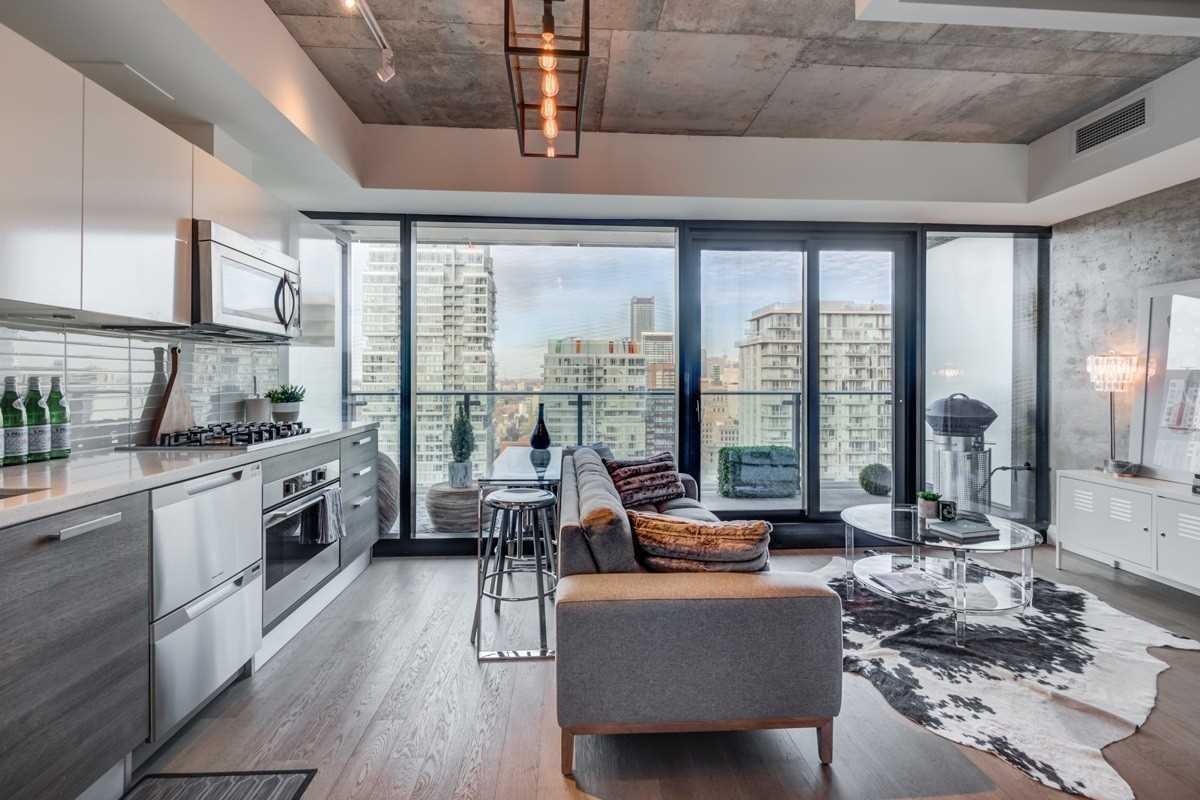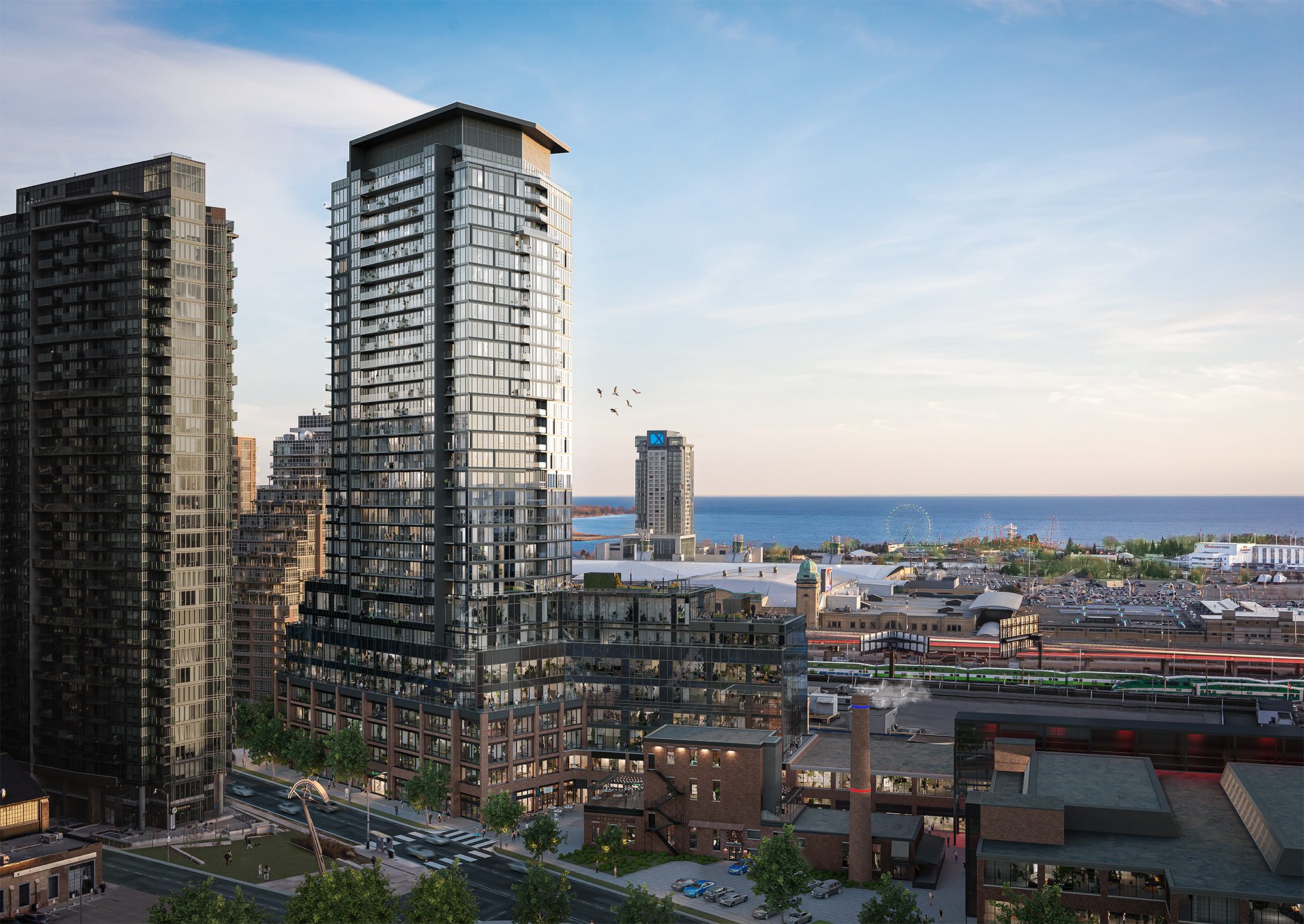
Leveraging home equity to buy a pre-construction condo in Toronto is one of the biggest goals of anyone interested in building wealth through Real Estate.
Traditionally over the last 15 years, the majority of people who have invested in pre-construction Toronto condos have made a lot of money doing so. The ability to leverage a small amount of money over a long period of time has proven to be a successful investment strategy. But how do you get there? Saving for a deposit can take what seems like forever. But there are other ways to invest in pre-construction condos, and the first place you should look is within the home you’re currently in.
Investing shouldn’t be such a daunting task and the concept of leverage is actually quite simple. We’ll show you how to leverage the equity in your current home with a home equity line of credit and how that will equal more wealth in the long run. More debt can equal more money! We’re breaking down a few simple concepts to help you better understand the revenue-generating potential in your current home investment.
Good Debt and Bad Debt
In general, good debt increases your net worth and/or helps you to generate value (ie. taking out a mortgage, borrowing student loans or accessing a line of credit to consolidate debt) while bad debt typically uses borrowed money (ie. credit cards, payday loans, etc.) to purchase goods or services that have no lasting value, like that sports car sitting in your driveway. Don’t get us wrong, we love a good vacation or sexy car as much as the next person, but from an investment standpoint, they aren’t going to bolster your financial portfolio and make you future money.

Home Equity, Explained
The longer you hold a property, the more equity it will earn. For example, let’s say you had bought your current home for $500K. Since buying it you’ve managed to pay $150,000 towards your mortgage and it has appreciated in value by $200K over the last few years. The fair market value (FMV) of your home will be $700K. The equity is the amount that you would receive if you decided to sell your home and pay off the remaining mortgage; in this case, the equity equals $450K ($700K FMV minus $250K remaining mortgage).
Leverage, Explained
So, now that we’ve established that investing in a mortgage does in fact equal good debt — which is the kind we’re after — let’s talk about leverage. In simple terms, it means to use borrowed money to increase the potential return of an investment. So, with that in mind, how to use leverage in real estate is actually quite easy. You can leverage home equity by borrowing funds on the fair market value of your current home. Chances are your home has increased in value since you purchased it. While you may have only paid down a portion of your mortgage to date you are still able to borrow up to 80% of the fair market value of your home, minus any outstanding mortgage due. Leveraging your home equity into additional properties is the trick.
Leveraging Equity
To demonstrate the effects of leverage on equity, let’s use the example above, but split it into a cash vs. leverage scenario:
- Cash Option: Buy a $500K property using all cash.
- Leverage Option: Buy a $500K property with $100K cash and $400K loan
If and when the property appreciates to $600K the following year, what happens?
- Cash Option: Return on equity = 20% ($100K increase on a $500K investment).
- Leverage Option: Return on equity = 100% ($100K increase on a $100K investment).
By using leverage, not only do you outlay less cash, but you also get a much higher (5x to be exact) return on equity.
Using Home Equity to Buy Real Estate
How can you make leveraging home equity work for you? Well, when you own a property and you have equity built into your home, you’re allowed to leverage home equity (i.e. borrow that home equity, meaning that mortgage providers will let you refinance or re-draw 80% of the market value of your home) for a nominal, low interest rate. For example, if your house is worth $500K, a lender will let you borrow $400K (minus any current mortgage amount outstanding).

Using a Home Equity Line of Credit (HELOC) as Leverage for
Pre-Construction
As mentioned above, it’s easy to obtain leverage if you’ve amassed equity in a property that you already own. You simply need to approach your bank for a home equity line of credit, also known as a HELOC loan. You can then use this HELOC loan leveraging your home equity to buy a pre-construction condo.
Let’s take the $400K property from above and let’s say you still owe $200K on your mortgage. In this scenario, you can still borrow $200K (from 400K – 200K), at roughly 3% or $6K each year, which over five years would amount to $30K.
Using A HELOC To Buy a Pre-Construction Investment Property
At this point, you can invest that $200K into a rental property, which will accumulate its own equity over time to more than makeup for the $30K extra you will need to pay in interest on the initial loan. And, as a cherry on top, the Canada Revenue Agency (CRA) allows you to deduct the interest portion of your investment property mortgage from your taxes, so it’s a win-win.
When it comes to this setup, the more properties you add the more complicated the math becomes, but you get the idea: more leverage = more equity = more money in the long run! By using leverage, you increase your ability to purchase high-value investment properties which subsequently increases your net gain as property values appreciate.

Home Equity Loan versus Home Equity Line of Credit (HELOC)
The difference between a home equity loan and a home equity line of credit (HELOC) might sound complicated but it’s actually quite simple.
A loan is a fixed amount of money in one lump sum paid upfront. You’ll start paying interest on the loan the moment you take it out. The reason why I always suggest use a home equity line of credit (HELOC) instead is that you only pay interest on the funds you use as you use them.
This can make a big difference when it comes to purchasing a pre-construction condo with borrowed funds. Unlike re-sale where you put down 20% down payment upfront, pre-construction is paid in installments. Typically, 15% to 20% in three installments over the first two years, with the final 5% paid approximately 3 years later upon completion.
Now that we’ve broken down how you can benefit when you borrow money and leverage a property instead of paying cash down, check out the many pre-construction condos we’re working on right now.
Looking for more information on how to make this happen? We know where to start and can point you in the right direction. Simply fill out our form below and we’ll get back to you right away.

TRB Education Hub
Get the real estate resources you need to succeed. Visit our education hub for market insights, guides, podcasts and more.




